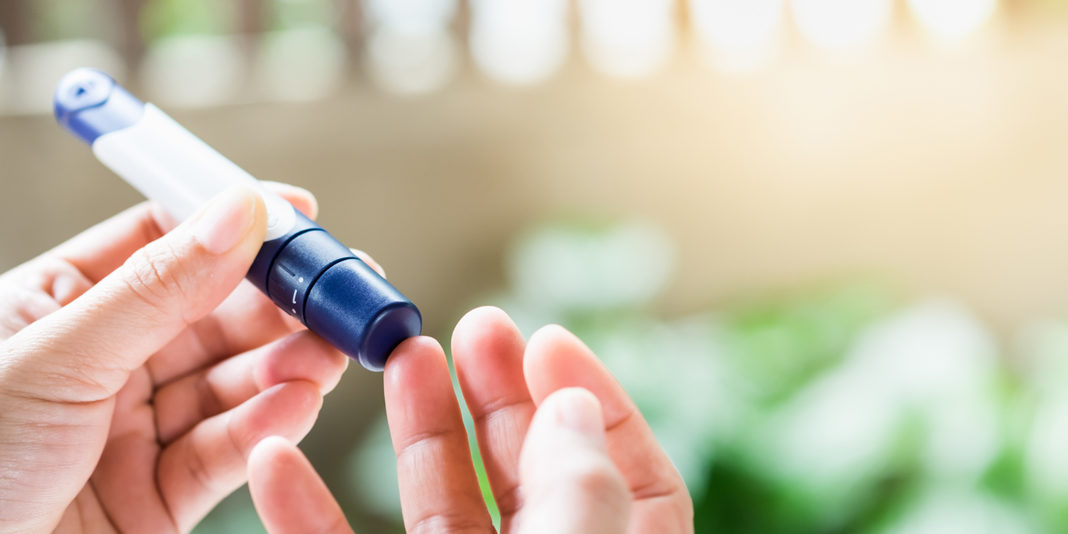A question with no answer prompted Lindsay McTavish to start researching how to help the children he cared for.
More than a decade later, the Capital & Coast DHB diabetes clinical nurse specialist has been the lead on four internationally published research papers on hypoglycaemic episodes in children and adults with diabetes.
Current international guidelines are to give children 10g of glucose and adults 15g if they are hypoglycaemic, no matter what their size. But McTavish and his research team of doctor colleagues from CCDHB and the University of Otago did trials – firstly with children attending a diabetes camp and then later with adults with type 1 and then type 2 diabetes – to determine if the dose should vary with the patient’s weight.
“We carried out four clinical trials over 10 years to try to find whether there is a faster and more effective way to treat hypoglycaemia in children and adults with diabetes,” says McTavish.
The team’s recently published results indicate there is. The findings show larger people need more glucose – so a weight-based method is the best way of managing hypoglycaemia. The Wellington team’s research – if reviewed and adopted – could lead to guideline changes worldwide in how hypoglycaemia is managed.
Starting on the clinical research path
So how did a clinical nurse specialist end up leading the world in this type of diabetes research?
“I joined what is now Capital & Coast DHB as a paediatric diabetes nurse in the diabetes service in 2000 – just a month before 9/11,” recalls McTavish. “Back then the international recommendation was to give those with diabetes 10 grams of glucose to anyone having a hypoglycaemic event, regardless of whether the child was three or 15 years old.
“I wondered about this, and asked ‘why do we do it this way when with every other medicine given to a child it is measured on how much that child weighs?’,” says McTavish.
McTavish dug deeper and found that the international research literature recommending the dosage amount for children was based on professional opinion and not on clinical evidence.
McTavish – who now has 25 years’ nursing in diabetes and a clinical master’s under his belt – at that point wasn’t sure about the next step. So he talked to paediatrician colleague Associate Professor Esko Wiltshire, whose own research specialty is diabetes, and Wiltshire recommended he go to the UK to do a short course being offered at Cambridge University by the International Society for Paediatric and Adolescent Diabetes (ISPAD). There McTavish learnt how to do both qualitative and quantitative research on diabetes in children.
“Once I’d got the ethics sorted, I was able to do our first research at a camp for children with diabetes in Otaki in 2007.”
Both the children and their families were surprisingly supportive of the research at this stage, says McTavish.
“We were looking at what types of glucose should be used when treating a hypo and looked at their weight. We tested the different groups of common carbohydrate treatments, including glucose tablets, jelly beans, fruit juice and mints, to see what was the most effective.”
Together with his team, McTavish presented their children’s camp research – which found that treatment with 0.3g/kg of carbohydrate (excluding jellybeans) effectively resolved hypoglycaemia in most children within 15 minutes – to an international meeting.
Moving to adult research
From there someone suggested doing the same study on adults with type 1 diabetes and McTavish said ‘yes let’s give it a go, let’s do it’.
This later led to a research paper on adults with type 1 diabetes, then children and adults on insulin pumps, then a research paper on what amount of glucose best helps someone with type 2 during a hypoglycaemic event.
The research all showed that treating someone with more glucose, if they were larger, and less, if they weighed very little, was more effective than the current guidelines. As a result, Capital & Coast and Hutt Valley DHBs switched 10 years ago to a weight-based approach for children and five years ago for adults.
The impact of treating hypos with glucose tied to the weight of the patient has been huge, says McTavish.
“If you give the right amount of glucose in the beginning, you can actually shorten the duration of the hypo. A hypo can last for more than 15 minutes for the symptoms of shakiness etc. to return to normal. But they can be resolved in 10 to 12 minutes if treated properly.
“If you don’t get the right amount of glucose into the patient, they will be having longer and more hypos over time.
“Cognitive gaps and signs of dementia are now being seen in long-term diabetes patients as a result of too many hypos,” says McTavish. “So you may as well do it right once rather than follow the international guidelines and give them several doses of glucose throughout one hypo.”
Minimising the shock
From the get-go, McTavish was drawn to diabetes nursing.
He sees one of the most important elements of what is a multi-faceted role is first and foremost minimising the shock of a diagnosis to the families affected by diabetes – particularly a child diagnosed with type 1 diabetes.
“Some of those families are injecting insulin two to five times a day. A lot of families and kids hate getting, or administering, injections. It is an ongoing process of matching their food with their insulin and activity to get it right.”
McTavish didn’t always plan on being a nurse; he did two years of pharmacy training before changing tack.
“I actually chose nursing after coming across a motorbike accident one day and finding I was totally useless at the scene. I later went to Sydney Children’s Hospital to start one of the last hospital-based nursing programmes – I didn’t think I was cut out for learning in a classroom.”
Prior to beginning the research, McTavish remembers reading just one line in an American Diabetes Association publication talking about studies in the 1990s suggesting tying glucose to weight.
“Otherwise it hadn’t been studied. Previously the adult patient would feel symptoms like feeling shaking and difficulty concentrating at a blood glucose of around 3.1 mmol/L then they would be told to have, say, 15 grams of glucose.
“The longer and more frequent the hypos, the higher the likelihood of brain damage of one form or another, or it could lead to poor diabetes control and bigger problems later on, like eye disease and renal failure.”
McTavish says diabetes burn-out for clients is a real thing. “You feel empathetic towards them; they’ve been doing injections and testing for many years and surviving with a chronic illness. It’s a tightrope managing both hypo and hyper events.
The juggle – of nursing and research – is also real, says McTavish. “I have to be conscious about having ringfenced time for research. Clinical time is clinical time and you think differently.”
Nurses – give research a go
“I came up with a simple algorithm for the type of research any nurse can do,” says McTavish. “You have a question you need the answer to. You just have to find the energy to answer it.
“You shouldn’t have to do it alone; you need a statistician and people who are willing to edit your work, as well as a librarian to help you do the literature search.
“It doesn’t have to be complicated. Research adds to the body of evidence we use every day in our clinical nursing practice.”
Hilary Graham-Smith, associate professional services manager for the
New Zealand Nurses Organisation, agrees. She says nurses are conducting research as part of their job sometimes without even realising they’re doing it.
“Nurses are doing research when they are trialling a new wound care product, for example. They bring huge experience and knowledge to research, so if they come up with a theory and put it to the test, the benefits can be fantastic for consumers.”
While there are not many positions where nurses focus solely on research, nurses can do research as part of their programme of study, including as part of their master’s study.
Nurses have insights into a patient’s experience that other health professionals do not, says Graham-Smith. “Patients can find it easier to talk to nurses about what is going on for them. Nurses are at patients’ bedsides in hospitals and that can give them a lot of insight into how patients are feeling and about their treatment.”
Graham-Smith says that while there are barriers to nurses being involved in research, such as a lack of time and a heavy workload, McTavish is an example of the power of nursing research. “Lindsay has a lot of passion, experience and knowledge and has put it to excellent use.”
Next research question in the pipeline
For McTavish’s research on adults with type 2 diabetes, the average weight of patients was 90kg. Next up, Lindsay wants to look at the effects of a higher amount of glucose for some bigger people, weighing around 140kg.
“I never get tired of research – there’s always another question to be asked and answered. All the studies set the path for the next one.”





















